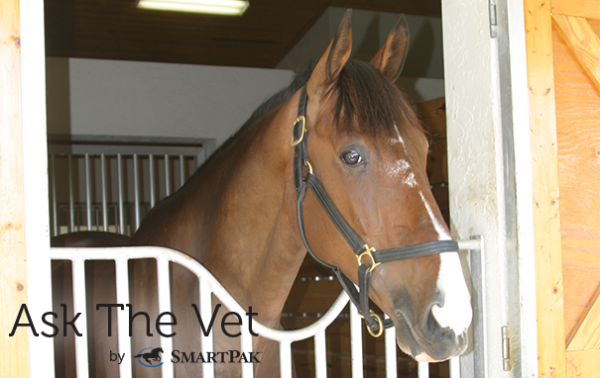Benefits of Fat Supplements for Horses - Uses & Feeding Tips

We are currently feeding Safe and Easy pellets at our barn and everyone is torn as to which fat supplement is best fed along with their grain. Would Ultimate Finish 40 vs Ultimate Finish 100 be better for the horses and specifically create a better topline? Is a fat supplement recommended for all horses? – K
Dear K,
To answer your last question first, no, fat supplements are not recommended for all horses. Horses that are overweight or obese (body condition scores of 7, 8 or 9 or “easy keepers ”) probably should not have additional fat in their diets. And any horses that do not seem to be able to digest, absorb or metabolize fat probably should not be fed any.
What horses DO benefit from fat?
- horses that need to gain weight (“hard keepers“) who are already on a complete and balanced ration with plenty of forage and moderate levels of grain
- horses that get “hot” on grain but need extra calories to maintain weight and condition
- horses in heavy training or competition that cannot get enough calories from forage and grain alone
- horses that “tie up” or develop exertional rhabdomyolysis when fed large amounts of grain, like thoroughbred race horses
- horses with polysaccharide storage myopathy or PSSM, whose muscles do better metabolizing fat for energy rather than sugars or starches
In addition, we are just beginning to recognize the benefits of the anti-inflammatory omega-3 fatty acids in supporting healthy skin, coat and hooves; fertility; joint health and other organ systems. Fortunately, you do not have to feed large amounts of omega-3 fatty acids to make a difference, just be sure that the fat source you are using definitely contains omega-3s. And if you’re going to add fat to the horse’s diet, you should probably add Vitamin E as an antioxidant.
Remember that a horse’s topline, and in fact his entire body, is a combination of fat AND muscle, and that we should feed to both meet (or exceed) their minimum daily requirements of nutrients as well as keep them close to the ideal of 5 on the Henneke Body Condition Scoring Chart (from 1 = emaciated to 9 = obese). Turnout and exercise also play a large role in a horse’s topline and other muscles, but that’s a different topic!